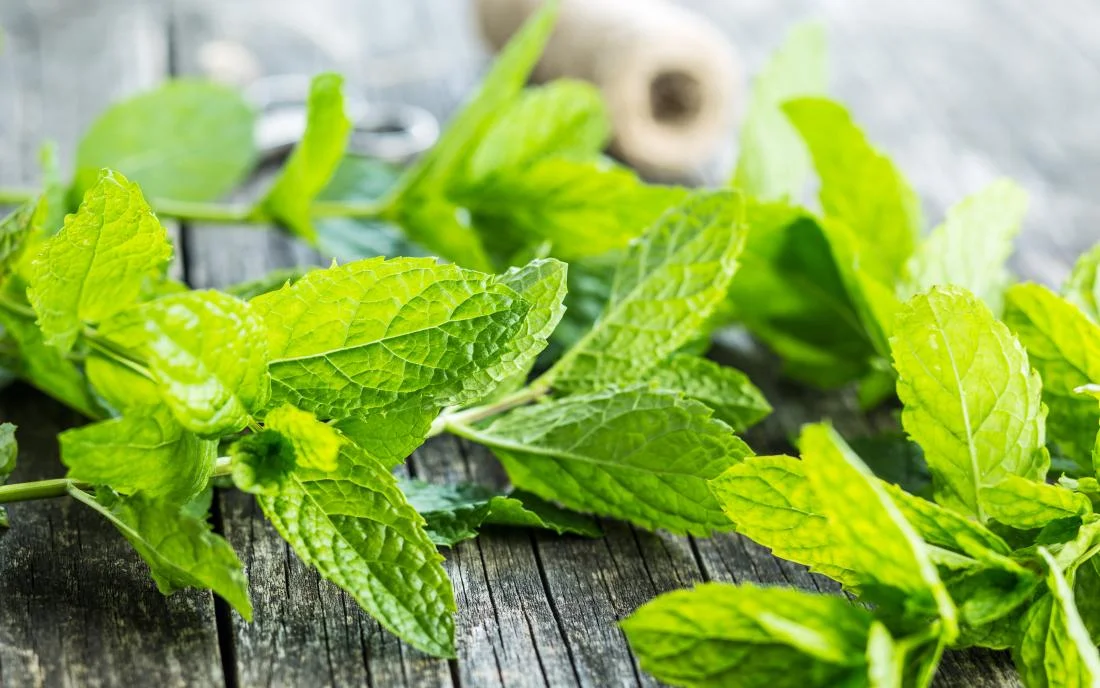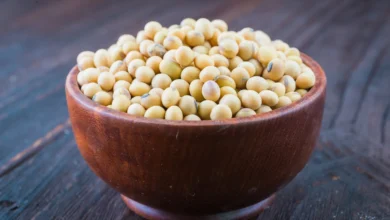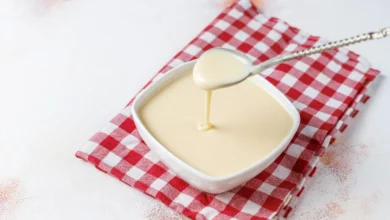All About Fresh Mint: Preparation, Storage, and Uses
Nothing quite beats the vibrant flavor and aroma of fresh mint. Whether you’re whipping up a refreshing cocktail, a flavorful salad, a delicious dessert, or a soothing cup of mint tea, fresh mint adds a delightful touch. In this guide, we’ll cover everything you need to know about preparing, storing, and getting creative with fresh mint.
Contents
- Mint
- How to Prepare Mint
- How to Store Mint
- How Long Does Fresh Mint Last?
- Health Benefits of Mint
- Potential Side Effects
- Flavor with a Twist
- Top Tips About Mint
- How to Choose the Freshest Mint
- Tips to Keep Mint Fresh
- Ways to Use Mint
- Substitutes for Mint
- Frequently Asked Questions
- Can I grow mint at home?
- What’s the difference between spearmint and peppermint?
- How can I use mint beyond food and drinks?
- How much fresh mint should I use as a substitute for dried mint?
- Can I Use Dried Mint Instead of Fresh?
- What Does Mint Taste Like?
- What Parts of Mint Do You Use?
- What’s The Best Way To Store Mint?
Mint
Unique Characteristics of Mint: Mint is beloved for its distinctive refreshing and cooling sensation, offering a vibrant burst of flavor. Alongside its subtle sweetness, mint adds an invigorating touch to a variety of dishes and drinks.
How to Prepare Mint
Prepping fresh mint is simple, but it makes a big difference in how its flavor shines in your recipe:
- Wash: Gently rinse the mint under cool water to remove any dirt or debris.
- Dry: Pat the leaves dry with a clean kitchen towel or paper towel. Excess moisture can make the leaves bruise.
- Pick: Carefully pick the leaves from the stems and discard the stems. For some dishes, you might want to leave mint leaves whole or roughly torn, but for maximum flavor impact, they can be finely chopped – unlocking bursts of minty goodness!
How to Store Mint
- The Paper Towel Method: Gently wrap the mint in a slightly damp paper towel and place it inside an unsealed plastic bag. Store this in your refrigerator’s crisper drawer for 3–5 days.
- Mint Oil Paste: Get creative by pureeing fresh mint leaves with a touch of olive oil to create a paste. You can use a stick blender or food processor for this. Store this paste in an airtight jar in the refrigerator for a few weeks.
- Freeze it! Wash and dry your mint, then place the leaves on a baking sheet and freeze them. When they’re frozen solid, pop them into an airtight container or freezer bag. While frozen mint leaves will be wilted once defrosted, they still pack in amazing flavor and fragrance.
How Long Does Fresh Mint Last?
Depending on your storage method, fresh mint leaves can last anywhere from a few days to several weeks. Here’s a quick breakdown:
- Refrigerator (Bouquet Method or Paper Towel Method): Properly stored in the fridge, fresh mint generally stays vibrant for about a week or two.
- Mint Oil Paste: Your homemade mint oil paste can last for a few weeks when stored in an airtight container in the refrigerator.
- Frozen Mint: Frozen mint leaves retain their flavor for several months, although their texture will change.
Health Benefits of Mint
Mint isn’t just about a burst of flavor; this aromatic herb offers a range of potential health benefits:
- Soothes Digestion: Mint’s natural compounds may relax digestive muscles, potentially easing indigestion, bloating, and symptoms of IBS.
- Fights Bad Breath: Mint has antibacterial properties that can help eliminate odor-causing bacteria, freshening your breath.
- Aids in Breathing: The cooling sensation of mint can act as a natural decongestant, potentially offering relief from congestion and coughs.
- Potential Immune Boost: Mint contains vitamin C and antioxidants, which support a healthy immune system.
- May Improve Focus: Some studies suggest that inhaling peppermint oil could enhance alertness and memory.
- Reduces Nausea: Mint, often in tea or candy form, may offer a natural remedy for nausea and vomiting.
- Calms Skin Irritation: Mint’s anti-inflammatory properties can help soothe skin conditions like eczema, offering potential relief from itchiness.
Incorporating Mint: Add mint leaves to salads, smoothies, or beverages, or enjoy a cup of refreshing mint tea for a wellness boost.
Potential Side Effects
While generally safe for most people, mint can cause side effects for some individuals. These may include:
- Heartburn or indigestion: Especially if consumed in large quantities, particularly peppermint oil.
- Allergic reactions: Some people may be allergic to mint, experiencing rash, itching, or difficulty breathing.
- Interactions with medication: Whisk and Nibble suggests you to consult your doctor if you take medication, as mint may interact with some drugs.
Important Note: It’s best to start with smaller amounts of mint and see how your body reacts, especially if you are prone to allergies or sensitivities.
Flavor with a Twist
Want a more intriguing flavor in your recipe? These might be intriguing alternatives:
- Chocolate mint: A fun surprise! Naturally sweet with a touch of mint, this one’s perfect for desserts or drinks.
- Harissa: If you’re okay with a little heat, harissa hummus paste gives you complex spice, a hint of smokiness, and a touch of something reminiscent of mint.
- Lemon pepper or mustard seeds: For brightness without the typical minty notes, these spices are interesting substitutes when you want a pop of flavor.
Top Tips About Mint
Here are a few tricks to help you get the most out of this versatile herb:
- Keep it fresh: To store fresh mint leaves longer, trim the stems slightly and place them in a glass of water, just like flowers. Place a loose sheet of plastic wrap over the container and store in the refrigerator. Change the water every few days for the best results.
- The right amount: Mint can be potent in recipes, so it’s best to start sparingly and adjust to taste as you go. The leaves contain concentrated flavors that will intensify as your dish cooks.
- Flavor pairings: Mint compliments a wide variety of ingredients! It works its magic with citrus fruits like lemon and lime, refreshing ingredients like cucumber, sweet delights like strawberries, tangy yogurt, and rich meats like lamb. Experiment to find flavor combinations you love – think fresh tabouleh salad or maybe blueberry goat cheese toast!
- Mint simple syrup: Elevate your desserts and drinks with a touch of minty goodness! Make a simple syrup by simmering water, maple syrup (instead of sugar), and fresh mint leaves until infused.
How to Choose the Freshest Mint
Look for these signs to choose the freshest mint:
- Vibrant Color: Look for perky, bright green leaves.
- Spotless: Avoid mint with limp leaves, yellowing sections, or any dark spots. These signs show age or damage.
Tips to Keep Mint Fresh
The Herb Bouquet
Treat your mint like a bunch of delicate flowers. Remove any ties or rubber bands and gently loosen the leaves. Trim the stems slightly and place them in a small vase or jar of clean water, leaving the leaves above the waterline. Store this “bouquet” on your kitchen counter, out of direct sunlight, and change the water every other day.
The Paper Towel Wrap
Gently pat your mint leaves dry and loosely wrap them in a slightly damp paper towel. Place the wrapped mint in an unsealed plastic bag or container and store it in the crisper drawer of your fridge. This keeps the mint moist without getting soggy.
The Ice Cube Tray
If you plan to use your mint within a few days, wash, and dry the leaves, then tuck them into the compartments of an ice cube tray. Fill with water and freeze. These minty cubes are perfect for adding to drinks, and they thaw quickly if you need mint for a recipe.
Ways to Use Mint
Savory Delights
- Fresh in Salads: Tabouleh salad is a classic, and I bet it’s already a family favorite! This weekly regular highlights the power of fresh mint. If you’re out of fresh, dried mint still works in a pinch.
- Beyond Tabouleh: The Mediterranean diet embraces fresh mint, pairing it perfectly with parsley and other herbs. It’s a fantastic garnish for dips like baba ghanouj, mutabal, and hummus, where mint provides a flavor dimension that can’t be replicated with a substitute herb.
Sweet Treats & Beyond
- Trendy Toast: Blueberry toast is one of my favorite brunch items! You can experiment with fresh herbs here, enhancing both the sweet and savory components for a truly satisfying treat.
- Ice Cream Upgrade: Who doesn’t love a classic like mint chocolate chip ice cream? But have you tried adding fresh mint to homemade varieties for an even more vibrant flavor?
Refreshing Drinks
- Cocktails and Beyond: Mint julips and mojitos are classics, but there’s always room for flavorful experimentation! Herbs like basil and fresh mint can add a unique twist to your favorite cocktails, including those with a citrusy base like a Grapefruit and Rum Cocktail. Mint and its substitutes pair well with other flavors, opening endless possibilities for delightful custom cocktails and mocktails.
Substitutes for Mint
Sometimes, you might not have fresh mint available or may need a substitute for a specific recipe to achieve the desired flavor profile. For a comprehensive guide on fantastic mint substitutes and their ideal uses, be sure to check out our article, “Substitutes for Mint“.
Conclusion
With its bright flavor and refreshing aroma, fresh mint is a versatile herb that can elevate a wide range of dishes and drinks. By following these preparation, storage, and usage tips, you’ll be able to enjoy the vibrant flavor of mint for longer – adding a touch of freshness to all your culinary creations.
_______________________
Frequently Asked Questions
Can I grow mint at home?
Yes! Mint is incredibly easy to grow and thrives in pots or garden beds. Choose a sunny spot with well-drained soil, and your mint plant will flourish.
What’s the difference between spearmint and peppermint?
Both are members of the mint family, but spearmint has a milder, sweeter flavor, while peppermint boasts a stronger, more intense menthol taste. They can often be used interchangeably in recipes but bear in mind their flavor profiles.
How can I use mint beyond food and drinks?
Dried mint leaves make a lovely addition to homemade potpourri. You can also try simmering some fresh mint with water to create a refreshing, fragrant room spray.
How much fresh mint should I use as a substitute for dried mint?
Generally, use three times the amount of fresh mint as you would dried. So if a recipe calls for 1 teaspoon of dried mint, you would use 3 teaspoons of chopped, fresh mint leaves.
Can I Use Dried Mint Instead of Fresh?
Fresh mint offers smooth leaves, sweet aroma, and that classic menthol flavor. Dried mint brings a rougher texture, slightly bitter flavor, and sharper aroma. As a conversion ratio, use 1 tablespoon of fresh mint to every 1 teaspoon of dried. Begin with a small amount and gradually increase as desired.
What Does Mint Taste Like?
Fresh mint has a slightly sweet flavor with a distinct cooling menthol sensation. It’s a strong-tasting herb, so it’s best to use it as a garnish or compliment to flavors rather than having it overpower a dish.
What Parts of Mint Do You Use?
Mint leaves are the most flavorful part. The stems, while edible, have a woody texture. They can be added to things like pesto or blended dishes where they might be strained out, or steeped to make tea.
What’s The Best Way To Store Mint?
The best way to store mint is in the refrigerator!
- With stems attached: Place in a glass of water and loosely cover with a plastic bag.
- Without Stems: After cutting away the stems, wrap the leaves in a damp paper towel, leaving one end open for circulation. This method helps them last up to 1 week. Without water, they will last 3 to 5 days.





